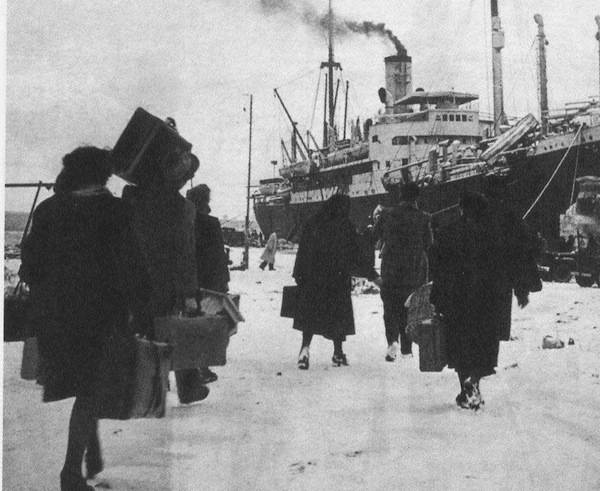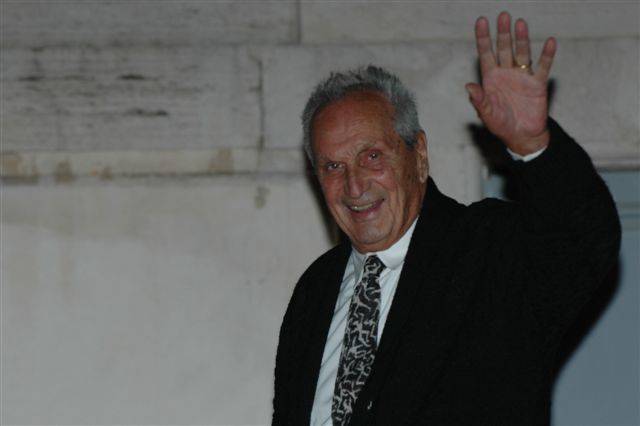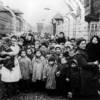Day of Remembrance: Emotions Lest We Forget
@font-face {
font-family: "MS 明朝";
}@font-face {
font-family: "MS 明朝";
}@font-face {
font-family: "Cambria";
}p.MsoNormal, li.MsoNormal, div.MsoNormal { margin: 0cm 0cm 0.0001pt; font-size: 12pt; font-family: Cambria; }.MsoChpDefault { font-family: Cambria; }div.WordSection1 { page: WordSection1; }
The Consulate General of Italy in New York was designated to remember a painful page of the recent and turbulent Italian history. February 10 was chosen in 2004 by the Italian government to preserve and renew the memory of the tragedy of the Italians who lost their lives in the Foibe, as well as the exodus of the Istrians, Fiumans and Dalmatians from their lands.
The conference began with Consul General of Italy Francesco Maria Talò who welcomed everyone and saluted the representatives of the Giulian-Dalmatian community, present in the room. The Consul paid homage to the thousands of people that “were victims of horrible persecutions as a result of the tragedies of history as well as the mistakes of the Italian government. Decades of guilty forgetfullness have passed. Now is the moment of remembrance, we must ask for forgiveness as Italians and as representatives of the institutions”.
“Our duty now is to look towards the future and inform the younger generations so this history is remembered and cannot happen again, truth makes us free”. This statement included the importance of the so-called “spirit of Trieste”, which also influenced the presidents of Croatia and Slovenia, together with President Giorgio Napolitano, to celebrate this important date in Trieste, to attend a concert in the main piazza, led by Riccardo Muti.
Those present at the Consulate General were brought back into the past, listening to a particular witness, Ottavio Missoni, an icon of Italian style and sport, who recorded an interview for RAI. The lights dimmed and the screen projected images of Missoni, moved. “One of the 360'000 exiles, victims of the tragedy of the foibe”, was the presentation of the famous fashion designer. Missoni spoke about Zara and the bombardments of the city in which he grew up. He admitted to have been displeased with the forgetfullness of the polititians for over forty years. “The 360'000 exiles were one-way exiles. That is the tragedy”, “Zara remained alive only in our hearts”, he stated, visibly moved.
Afterwards the Consul saluted the Italian Ambassador in Washington Giulio Terzi di Sant'Agata, who wished to thank especially the Giulian-Dalmatian community present and remind of the importance of this historical date for Italy.
Mr. Glacic, a witness and New York exile, spoke afterwards. He is the supervisor of the exhibition on view at the Consulate to remember the history of the Giulian-Dalmatian community.
He collaborated with the Consulate in researching witnesses and exiles in New York. “I felt at home when I put this exhibition together, and I wish to thank Consuln Talò for allowing me this opportunity”, he said before passing the microphone to other two protagonists of the Giulian-Dalmatian exodus.
A moving and heartfelt telling by the witnesses followed, with images being shown of families torn apart by foolish ethnic cleansing. Terrible memories were evoked in front of a silent crowd.
The Consul General also prjected other videos, including some lighter and humorous of American soldiers marrying young girls from Trieste and their linguistic difficulties.
The evening ended among applauses and the hope that such tragedies never happen again and that these memories stay alive and vivid in the minds of the new generations.







































i-Italy
Facebook
Google+
This work may not be reproduced, in whole or in part, without prior written permission.
Questo lavoro non può essere riprodotto, in tutto o in parte, senza permesso scritto.